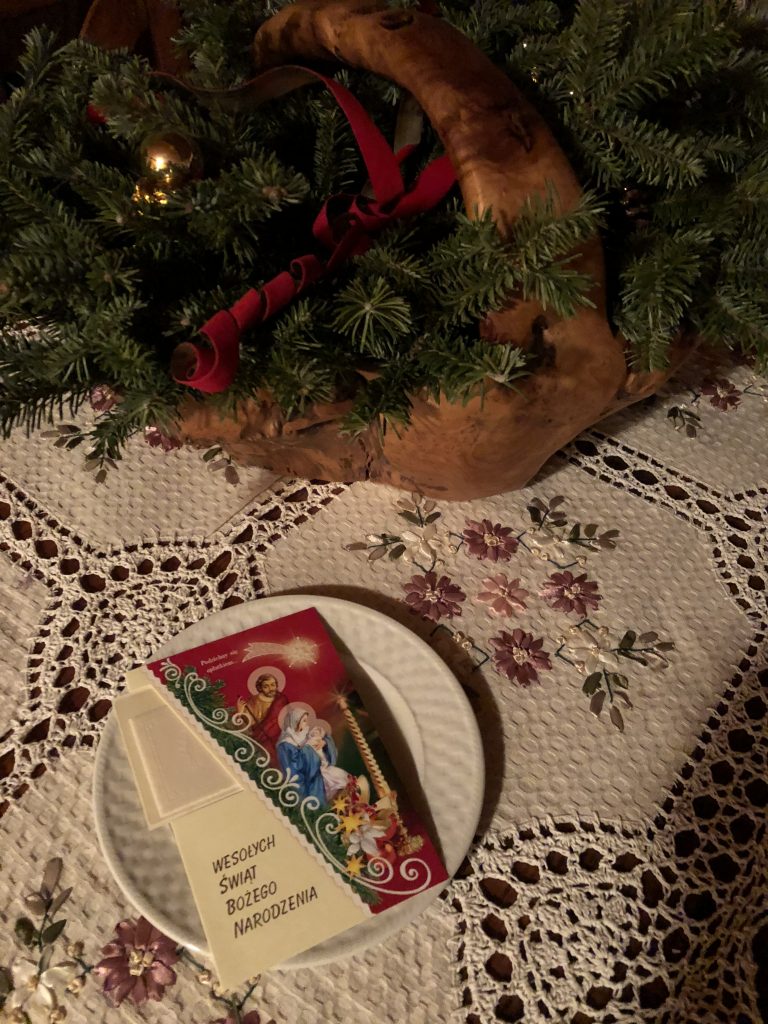Tradition of breaking wafer during Christmas Eve dinner in Poland Posted by Kasia on Dec 19, 2017 in Uncategorized
One of the most beautiful Polish Christmas customs is breaking of the “opłatek.” The “oplatek” is a thin wafer, made of flour and water. For table use, it is white. In Poland, colored wafers are used to make Christmas tree decorations. Formerly, these were baked by organists or by religious and were distributed from house to house in the parish during Advent. Today, they are produced commercially and sold in religious stores and houses.
This tradition originated in Poland during Early Christian times. This Christmas Custom began with a simple white wafer, baked from flour and water. The wafers are wonderfully designed to display Christmas images, such as the Nativity.
The entire family will gather around the table with the opłatek. Generally the eldest member of the family will begin the ritual by breaking off a piece of the wafer and passing it to another family member with a blessing. This blessing can simply consist of what you desire for your loved one in the upcoming year – whether it be good health, success, or happiness. The purpose of this act is primarily to express ones unconditional love and forgiveness for each member of his or her family. You are suppose to brake a wafer with each family member…even if you are not really in a good terms with someone (that way you say goodbye to all bad things, fights etc.)
The significance of the Christmas wafer is in that it shadows the Eucharistic meal that Catholics participate in at each Mass. Just as we share in the Eucharist as one family in Christ and receive Christ’s love through the Eucharist, the opłatek allows for one’s immediate family to come together and share the love they have for one another. This symbolism is deepened by the fact that the name of the town where Jesus Christ was born, Bethlehem, means “House of Bread,” which makes the opłatek tradition an especially beautiful way to celebrate the charity and unity so characteristic of the Christmas season.
Although this tradition is primarily enjoyed by the human members of the family, even the family pets can partake in this meal.Traditionally, this corresponds to the animals that were the first to greet Christ at his birth. In current times, this can also represent the important role that pets play in the family. Growing up on a fruit farm, my family also had animals. I remember taking the wafer to the barn after dinner and giving it to the cows, sheeps and horses. Supposedly, after eating it, they were able to speak human language just for that one night…I never witness this actually happening, but I still believed and was hoping it will happen one year:)

Build vocabulary, practice pronunciation, and more with Transparent Language Online. Available anytime, anywhere, on any device.





Comments:
Matt:
It’s odd how Polish is Americanized. Opłatek is the focus of conversation here and we begin pronouncing it incorrect phonetically. It is pronounced: “Opwatek”, everyone.
“Oplatek” is the standard conversion because ł is a variant of L, and it’s in the English alphabet.
Also, I see no mention of the pet opłatek being pink. It can be pink for pets.